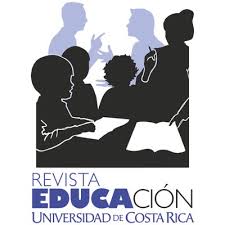Abstract
Building virtual learning environments (EVA) that shorten emotional, cognitive and geographical distances is a challenge that many teachers face today. This article relates an experience of Techno-Pedagogical Accompaniment (ATP) with a learning community of 149 teachers in a private university of San José, Costa Rica between October 2016 and March 2017. The objective of the research consisted in knowing, analyzing and documenting the transfroming lived by this learning experience and the process of technical-pedagogical accompaniment that allowed them to move from repositories of online documents to virtual learning environments, The ethnographic method was used with the support of an online questionnaire through an online questionnaire, the survey of participants' expressions in forums and the participant observation as methods of data collection. The experiences of teachers in their process of appropriation of technology and change were analyzed. on their practices based on the meanings they assigned to the process and its transformation. The main findings of the research were first, it is evident that the accompaniment process favored the progressive construction of learning spaces through the use of technology in a creative way; second, the experience generated an innovative, flexible and fun attitude towards the learning processes that led to substantial changes in rigid and traditional educational models; third, the identification and differentiation by teachers between a repository of online documents without evident pedagogical intention and an EVA that encourages interaction and creativity, showing the presence of teachers and students; fourth, they began to visualize technology as an ally in their professional practice, since it allows them to offer different learning alternatives to their students through collaborative design and writing tools.
References
Referencias extraídas
Ander-Egg, E. (2003). Repensando la investigación-acción-participativa (4ª ed.). Buenos Aires: Grupo Editorial Lumen Humanitas. Recuperado de http://www.terras.edu.ar/aula/ cursos/10/biblio/10ANDER-EGG-Ezequiel-La-investigacion-propiamente-dicha.pdf
Assmann, H. (2002). Placer y ternura en la educación: hacia una sociedad aprendiente, 90. Narcea Ediciones.
Badilla Saxe, E. (2015). Educación sin distancia. Barcelona: Gedisa: Recuperado de http://www.nacion.com/opinion/foros/eleonora-badilla-educacion-distancia_0_1485851420.html
Bates, T. International Institute for Educational Planning (2001). National strategies for e-learning in post-secondary education and training, 70. Paris: Unesco.
Bergmann, J., & Sams, A. (2014). Dale la vuelta a tu clase. Innovación educativa, España.
Carlino, P. (2010). Formación en servicio de profesores secundarios y universitarios para integrar la lectura y escritura en todas las materias. Complejidad, comunidades docentes y formación de profesores. Una visión sistémica. Sinaloa: Universidad Autónoma de Sinaloa.
Garfinkel, H. (2006). Estudios en etnometodología (Vol. 52). Anthropos Editorial.
Geertz, C. (1991). La interpretación de las culturas (Vol. 1). Barcelona: Gedisa.
Gutiérrez, F. (1995). Mediación pedagógica en la elaboración de libros de texto. San José, Costa Rica: Unesco.
Hine, C. (2011). Etnografía virtual. Editorial UOC.
Johnson, L.; Adams Becker, S.; Gago, D.; García, E. y Martín, S. (2013). NMC Perspectivas Tecnológicas: Educación Superior en América Latina 2013-2018. Un Análisis Regional del Informe Horizon del NMC. Austin, Texas: The New Media Consortium. Recuperado de http://www.nmc.org/pdf/2013-technology-outlook-latin-america-ES.pdf
Kopcha, T. J. (2012). Teachers' perceptions of the barriers to technology integration and practices with technology under situated professional development. Computers y Education, 59(4).
Lave, J. y Wenger, E. (2002). Legitimate peripheral participation in communities of practice. Supporting lifelong learning, 1.
Moraes, M. C. (2007). Complejidad, transdisciplinariedad y educación: algunas reflexiones. Encuentros multidisciplinares, 9(25), 4-13.
Morado, M. F. (2017). Educación sin distancia en entornos virtuales. Berlín: Editorial Académica Española.
Ocampo-Hernández, S. (Mayo-agosto, 2016). Apoyo a las necesidades e intereses pedagógicos docentes a partir del acompañamiento y escucha por parte de la docente investigadora. Revista Electrónica Educare, 20(2), 1-19. doi: http://dx.doi.org/10.15359/ree.20-2.20
Prensky, M. (2010). Nativos e inmigrantes digitales. Distribuidora SEK.
Schank, R. C., Berman, T. R., y Macpherson, K. A. (1999). Learning by doing. Instructional-design theories and models: A new paradigm of instructional theory, 2.
Toro, J. M. (2005). Educar con “co-razón”. Barcelona: Editorial Desclée
Universidad Castro Carazo, (2016), Modelo Educativo.
Wenger, E. (2001). Comunidades de práctica: aprendizaje, significado e identidad. Barcelona: Paidós.
Wenger, E.; White, N. y Smith, J. (2009) Digital Habitats: sterwarding technology for communities. Portland: CPsquare.







